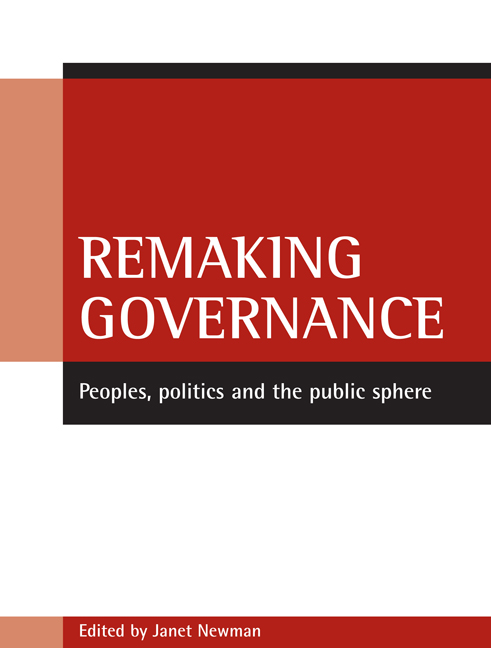Book contents
- Frontmatter
- Contents
- List of tables and figures
- Acknowledgements
- Notes on contributors
- Introduction
- one Reconstituting Europe: governing a European people?
- two Governance and the constitution of a European social
- three Remaking European governance: transition, accession and integration
- four Regendering governance
- five Welfare governance and the remaking of citizenship
- six Participative governance and the remaking of the public sphere
- seven Promoting democratic governance through partnerships?
- eight Among everyday makers and expert citizens
- nine Governance and the transformation of political representation
- Conclusion
- Index
six - Participative governance and the remaking of the public sphere
Published online by Cambridge University Press: 18 January 2022
- Frontmatter
- Contents
- List of tables and figures
- Acknowledgements
- Notes on contributors
- Introduction
- one Reconstituting Europe: governing a European people?
- two Governance and the constitution of a European social
- three Remaking European governance: transition, accession and integration
- four Regendering governance
- five Welfare governance and the remaking of citizenship
- six Participative governance and the remaking of the public sphere
- seven Promoting democratic governance through partnerships?
- eight Among everyday makers and expert citizens
- nine Governance and the transformation of political representation
- Conclusion
- Index
Summary
Introduction
Democratic institutions and the representatives of the people, can and must try to connect Europe with its citizens. This is the starting point for more effective and relevant policies (European Union White Paper on Good Governance; European Commission, 2001, p 3).
Participative governance is important in terms of our focus in this book on ‘remaking’ governance because it apparently offers not only a response to the problem of the legitimacy of government institutions, but also the potential solution to a range of social problems. It is linked to a decentred form of governance in which the role of the state – and the institutions of representative democracy on which it rests – is viewed as unable to deal with the complexity of policy problems and to respond to the differentiated needs and identities of citizens (Kooiman, 1993, 2000). This chapter examines the turn towards participative governance, focusing on two related issues. The first is the constitution of the public sphere in which participation is enacted. As earlier chapters of this volume have argued, the boundaries between public and private are fluid and contested (see especially the Introduction and Chapter Four). As power flows to transnational bodies such as the European Union (EU), down to ‘communities’ as a newly significant site of governance and outwards to a multiplicity of service providers, how is the public sphere delineated? What issues are deemed to be the province of public deliberation as opposed to the privatised choices or voices of individual consumers?
The second issue focuses on the public itself: how the technologies of power associated with participative governance produce classifications and divisions that shape the forms of political and social imaginaries from which the public sphere is constituted. The interest here is in the ways in which, by drawing citizens into more direct and involved relationships with governance practice, collaboration and participation may serve to enable the production of new forms of governable subject; but also, how the spaces which are opened up may form points around which social identity and agency is mobilised.
Remaking the public sphere
The concept of a public sphere in which citizens openly engage in deliberation on policy issues and problems is most closely associated with the work of Habermas.
- Type
- Chapter
- Information
- Remaking GovernancePeoples, Politics and the Public Sphere, pp. 119 - 138Publisher: Bristol University PressPrint publication year: 2005
- 3
- Cited by

